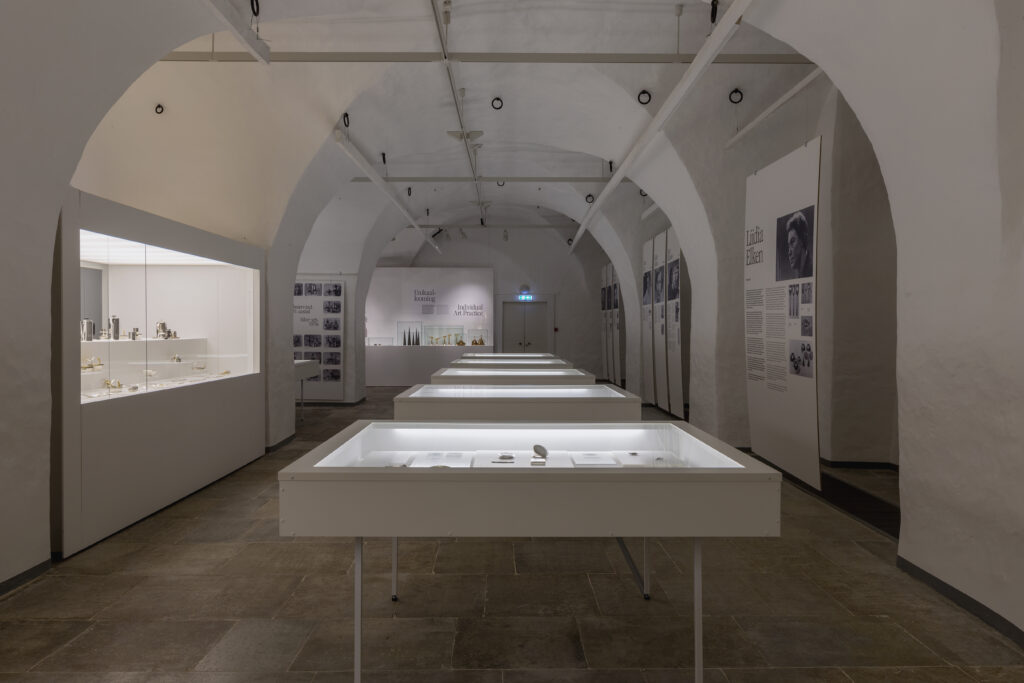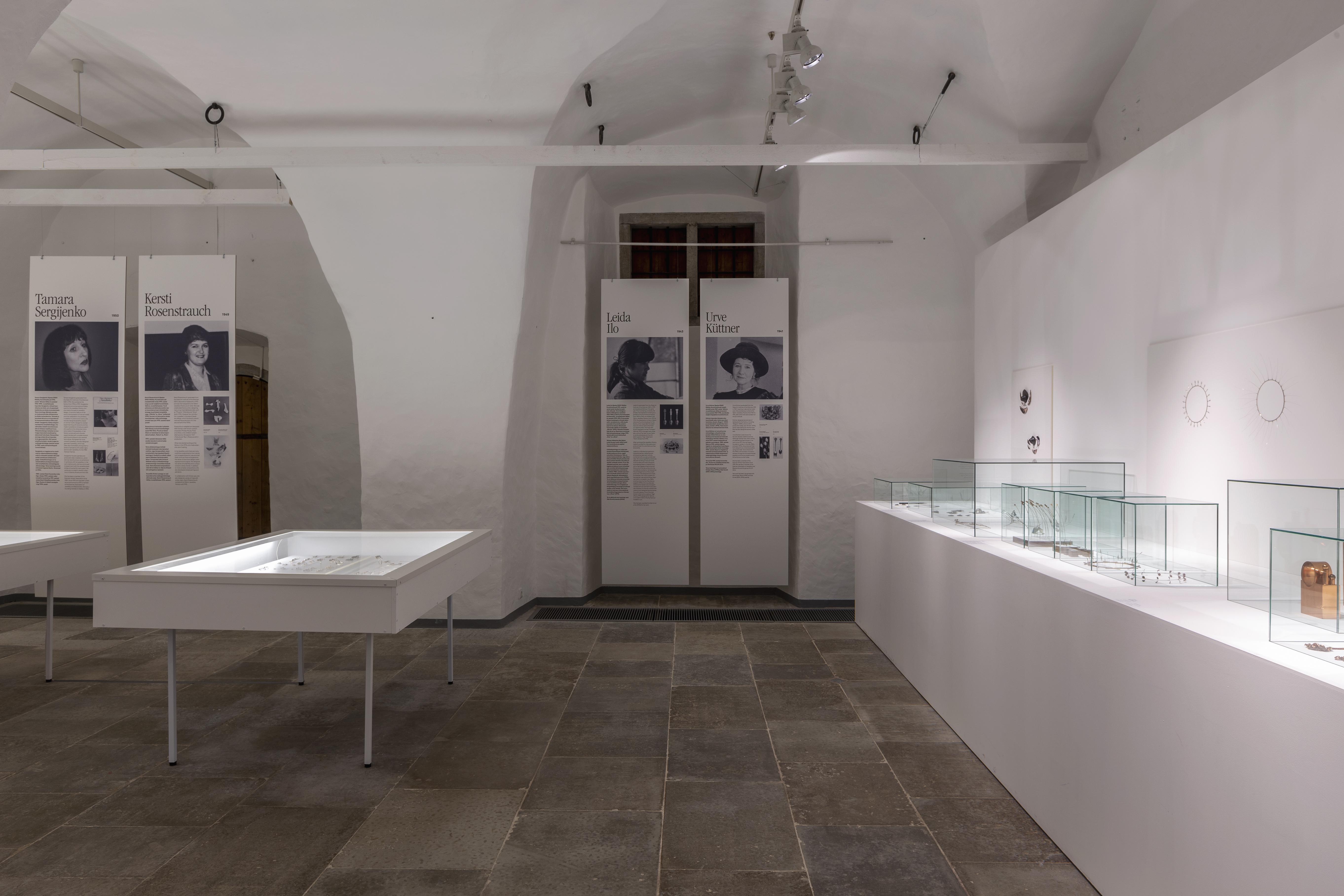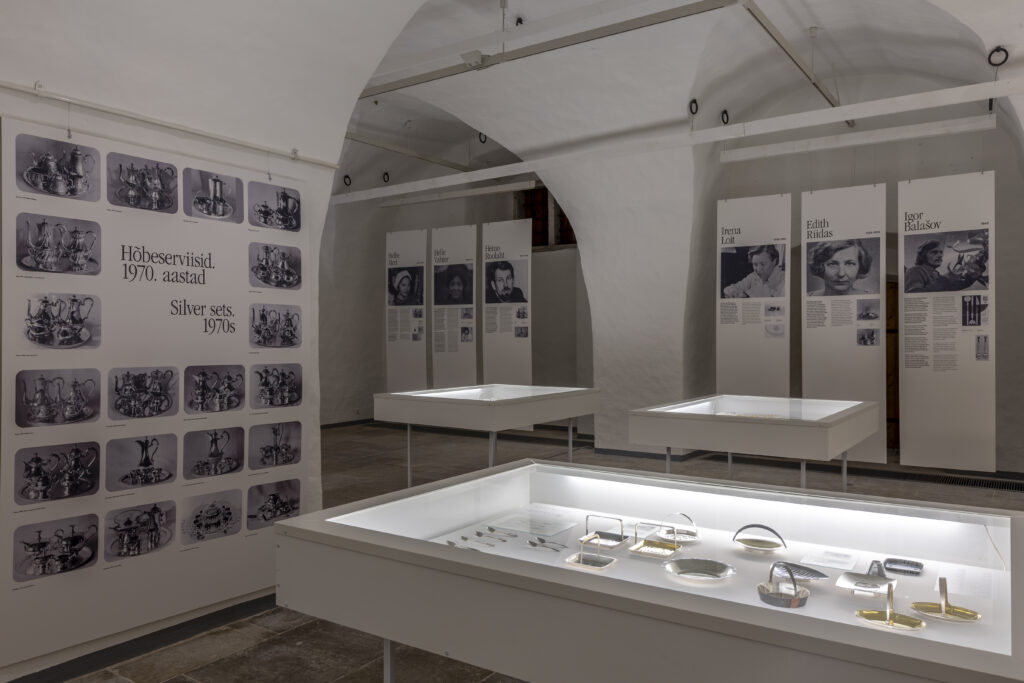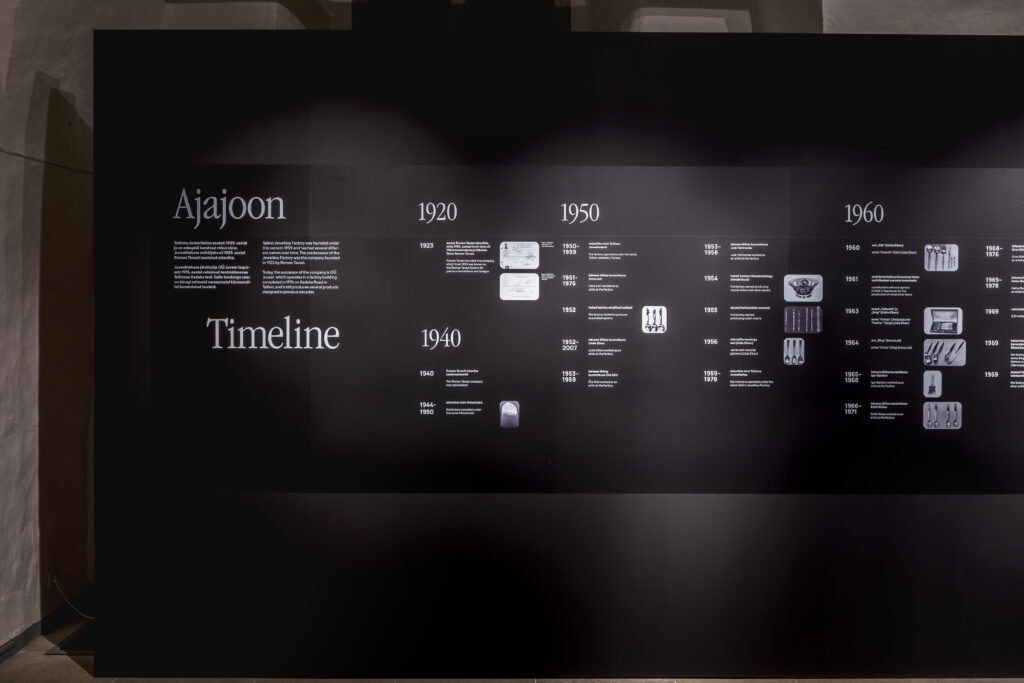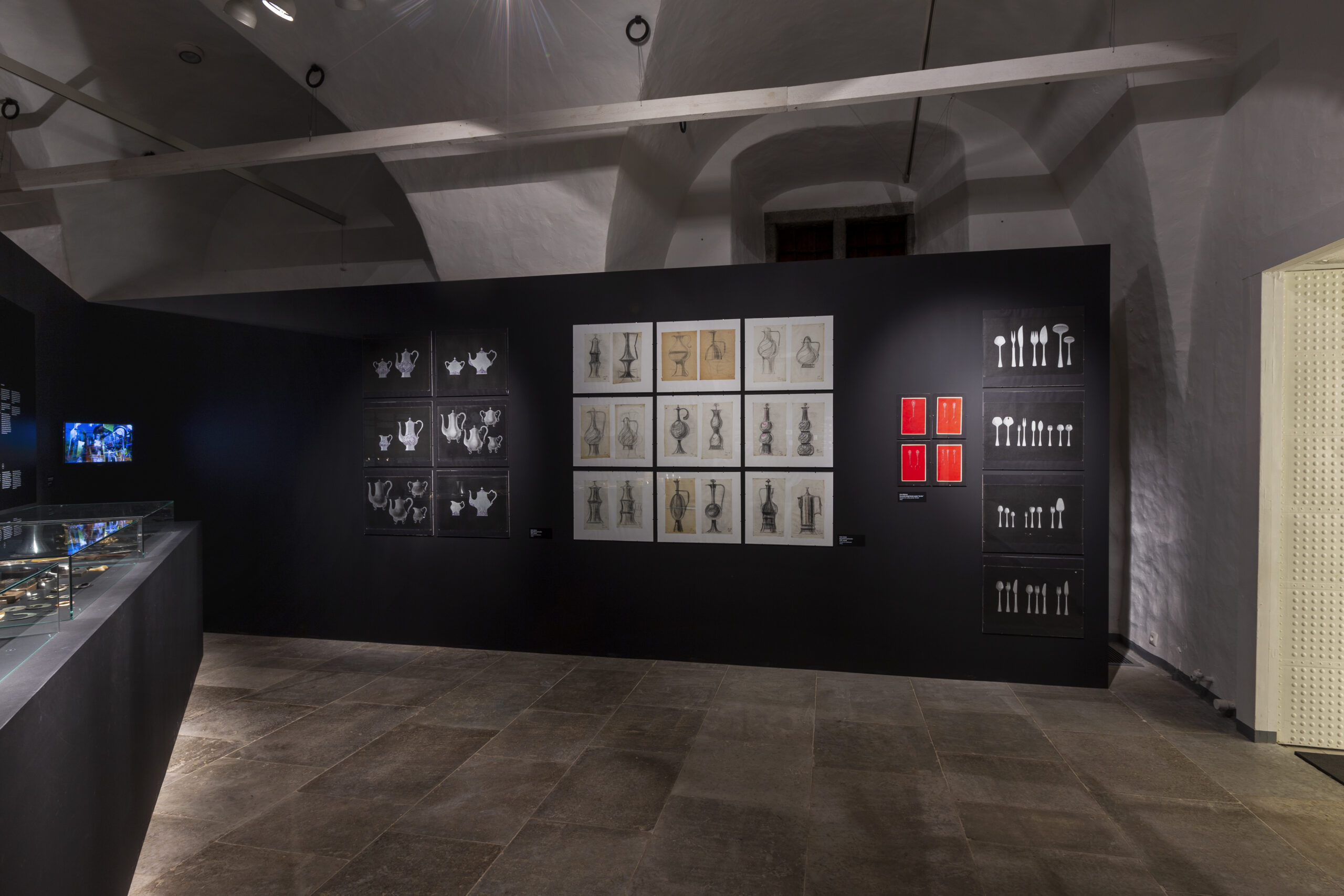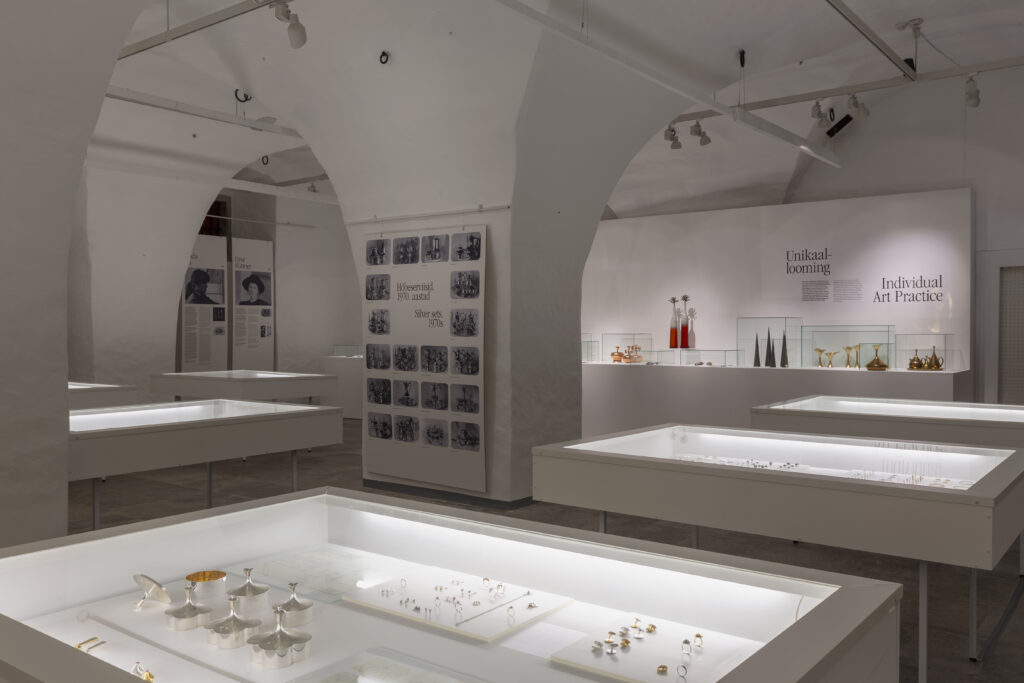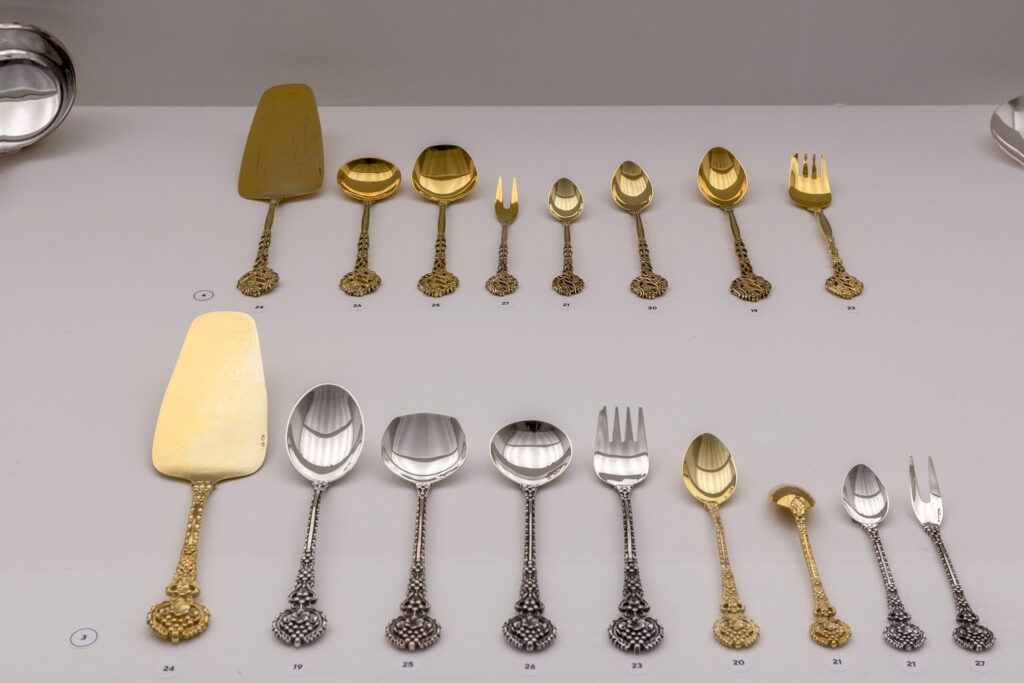Archive
Local Beauty: Tallinn Jewellery Factory
05.05.2023– 1.10.2023
Ground floor
Tallinn Jewellery Factory has an important role in the history of Estonian design. During the Soviet era, its austere and romantic style of tableware, cutlery and jewellery defined the look of local everyday life for decades.
Tallinn Jewellery Factory was founded in 1959 and has had several names over its lifetime. During the longest period, from 1959 to 1978, the company operated under the name Tallinn Jewellery Factory. The exhibition focuses on the work produced by the factory in the period 1951–1994, from the time when the first artists became involved with the factory, until the moment both the state regime and the market changed and the company was privatised.
The predecessor of the Jewellery Factory is considered to be the Roman Tavast factory for precious metal items and badges which also produced tableware and jewellery alongside its main focus of emblems. It was founded in 1923 and nationalised in 1940 by the Soviet government.
The Tavast company buildings and equipment on Pärnu Road survived the war, and under the new regime work continued in the same facilities and with many of the same employees, machinery and designs. In the second half of the 1970s, a new production building was built in Mustamäe.
Over the years, the factory produced silverware, both dishware and cutlery sets, as well as jewellery. Jewellery was initially designed and produced here over the period of a decade from the early 1950s and then again from 1977.
From 1951 onwards, nearly 15 artists, most of whom had graduated from the decorative metalwork department of the State Art Institute, worked for various lengths of time as designers at the Jewellery Factory. The most extensive creative contribution to the selection of products produced by the factory was made by Liidia Elken, with Irena Loit, Igor Balašov, Urve Küttner, Leida Ilo, Kersti Rosenstrauch and others close behind her. Their contribution was determined by the specifics of the factory’s products, there was no direct specialisation, and thus the artists designed tableware as well as jewellery.
The successor of Tallinn Jewellery Factory, OÜ Juveel currently operates in the same building. There are currently no artists working at the company, but they still produce several iconic cutlery sets, among other things. They have collaborated with designers in the production of the series of “Lummus” jewellery collections, which began in 2015.
In 1993, Roman Tavast’s son re-established his father’s company Roman Tavast OÜ, which is still operating today.
An important part of the Jewellery Factory archive has been preserved thanks to OÜ Juveel. The current exhibition is also largely based on this archive, which offers the opportunity to link objects, artists and the time of their planning and production, to highlight the design features of the objects, as well as the wider period-specific industrial art landscape. The exhibition also shows the nuances of the process from the design to the completion of the objects.
Thank you to OÜ Juveel and all the employees who helped to prepare the exhibition.
Curators: Kai Lobjakas and Ketli Tiitsar
Designer: Kaire Rannik
Graphic designers: Valter Jakovski, Valter Jakovski / Ruum 414
Sound: Janek Murd
Camera: Virko Veskoja
Thank you: Mart Mikli, Siim Anton, Ülle Ojamets-Toom, Urmas Samelselg, Ene Saar, Krista Laos, Leida Ilo, Urve Küttner, Kersti Rosenstrauch, Igor Balašov, Mari Käbin, Tamara Sergijenko, Kaia Kask, National Archives, Virko Veskoja, Harry Tensing, Krista Lehari, Ülar Linnuste, Hille Saluäär, Anne Raud, Refiner Translations, Tallinn City Museum, Art Museum of Estonia
Exhibition team: Kristi Paap, Helen Adamson, Toomas Übner, Ago Märjama
Exhibition is supported by: Cultural Endowment of Estonia, OÜ Juveel
Gallery
Photos: Mari Volens

